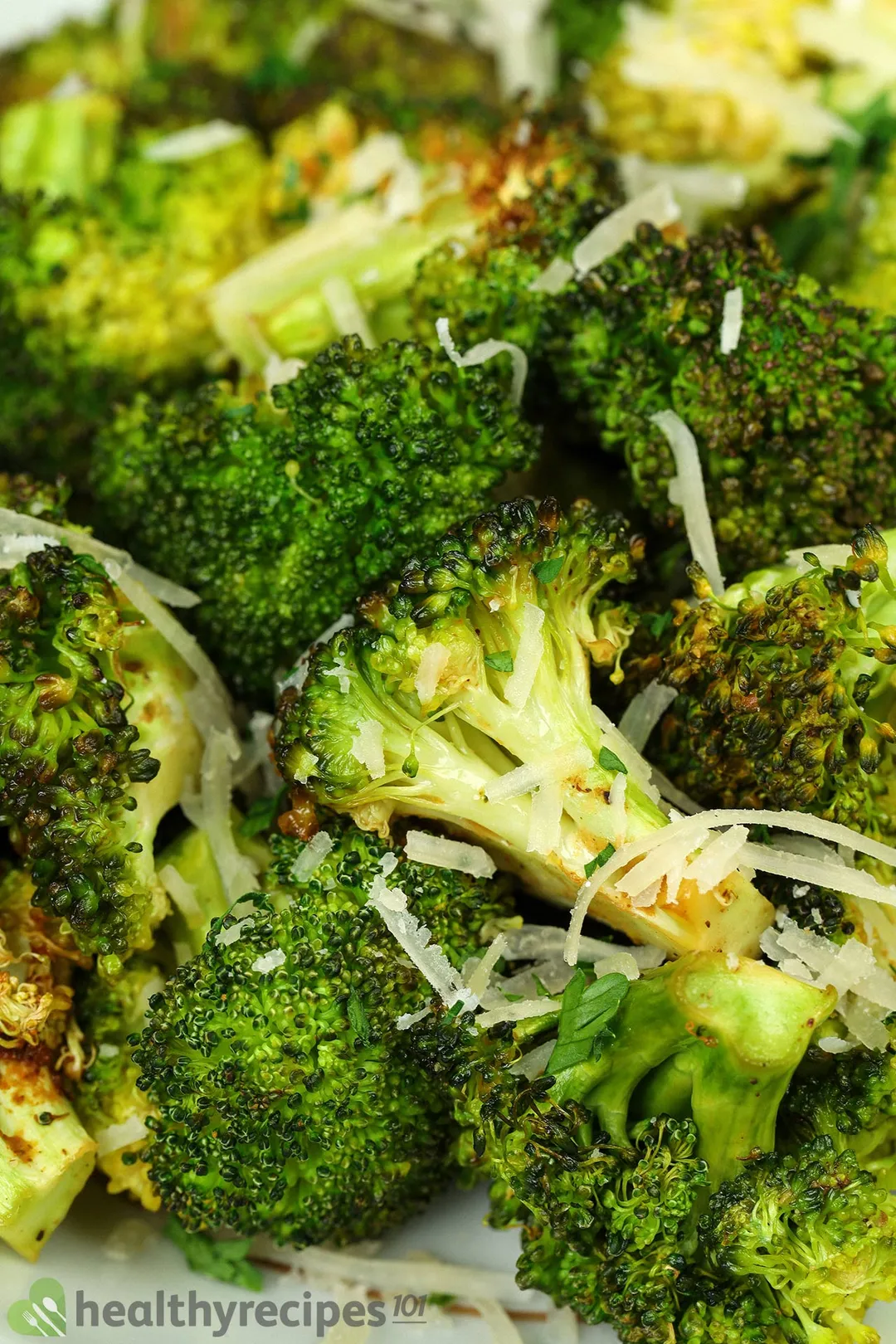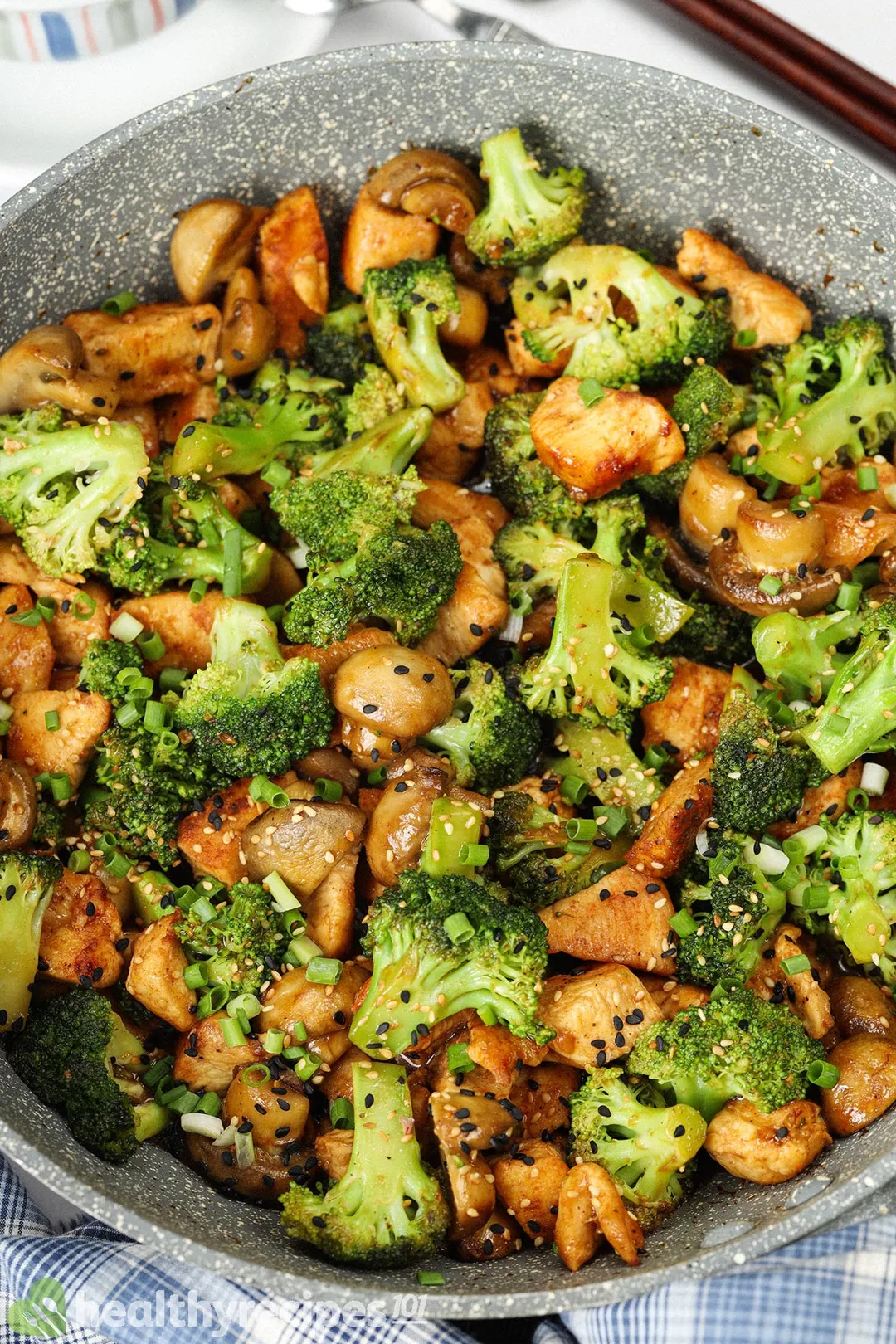In today's list of simple broccoli recipes, you'll find multiform dishes that hit different notes of flavor—namely garlicky, acidic, salty, sweet, and mildly cheesy... The intriguing contrast in textures between the broccoli florets and its stalk also makes it enjoyable in a variety of dishes.
Benefits of Broccoli
Broccoli provides many health benefits. It’s an excellent source of fiber, vitamins C, B6, E, B1, A, and other micronutrients.
For those trying to cut calories or stick to a ketogenic diet, broccoli is a great meal option. It’s low in calories and carbs, and also contains very small amounts of saturated fat and cholesterol.
Additionally, broccoli has a reputation for having anti-inflammatory properties and is a powerhouse of antioxidants, both of which are known to lessen cell damage and support your body's natural defenses against infections.
Best Simple Broccoli Recipes
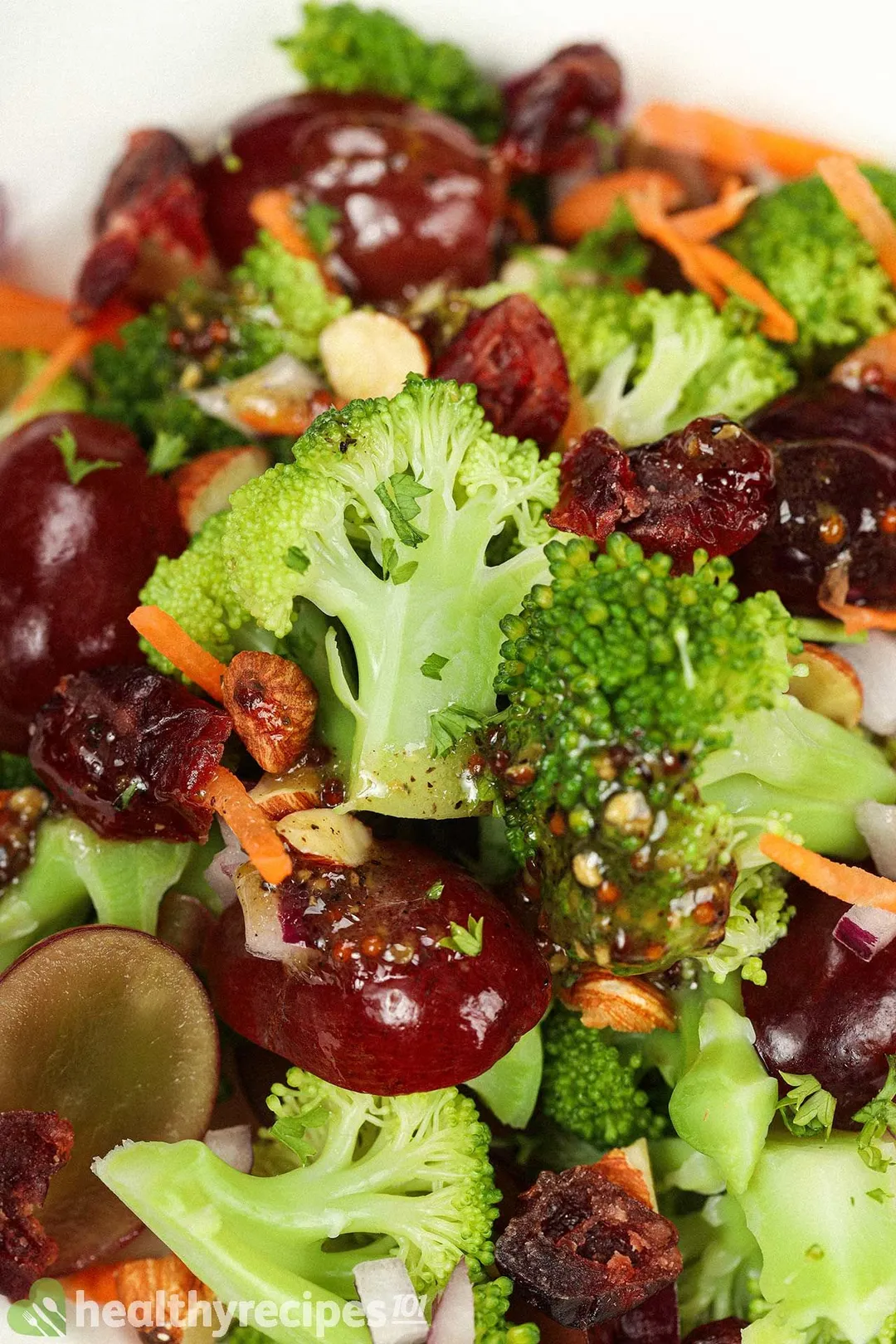
1 of 7
Vegan Broccoli Salad Recipe
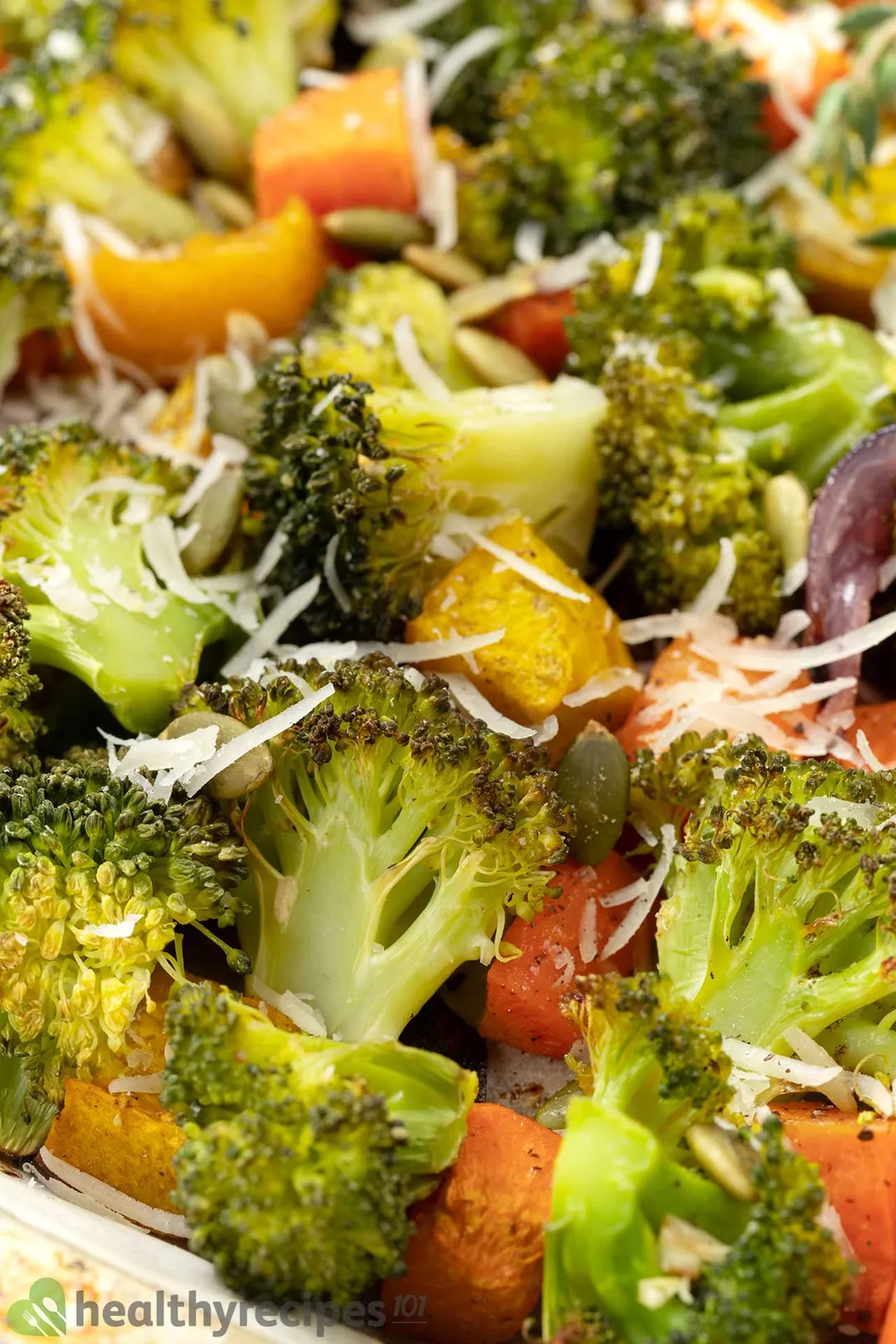
1 of 7
Roasted Broccoli Recipe
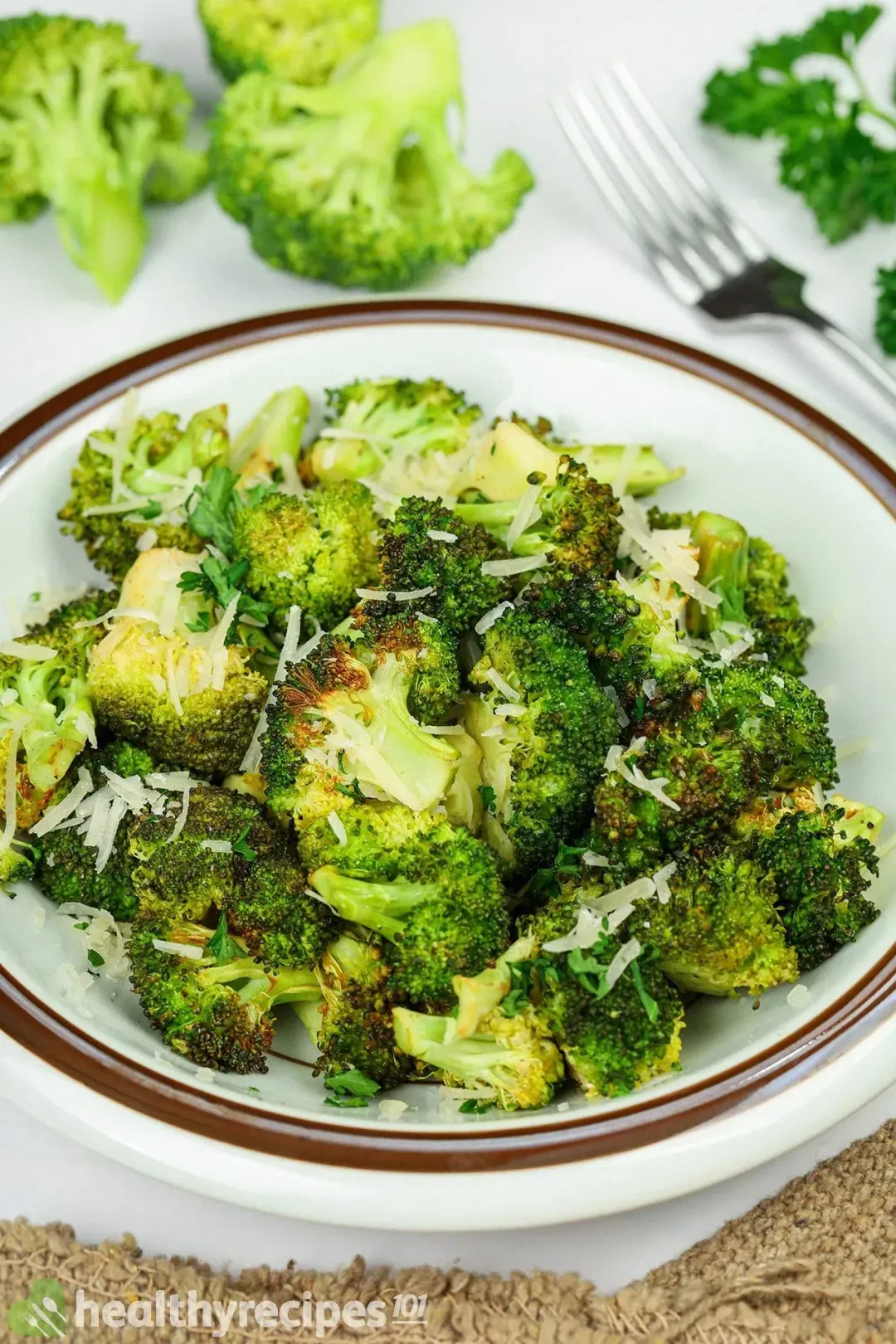
1 of 7
Air Fryer Broccoli Recipe
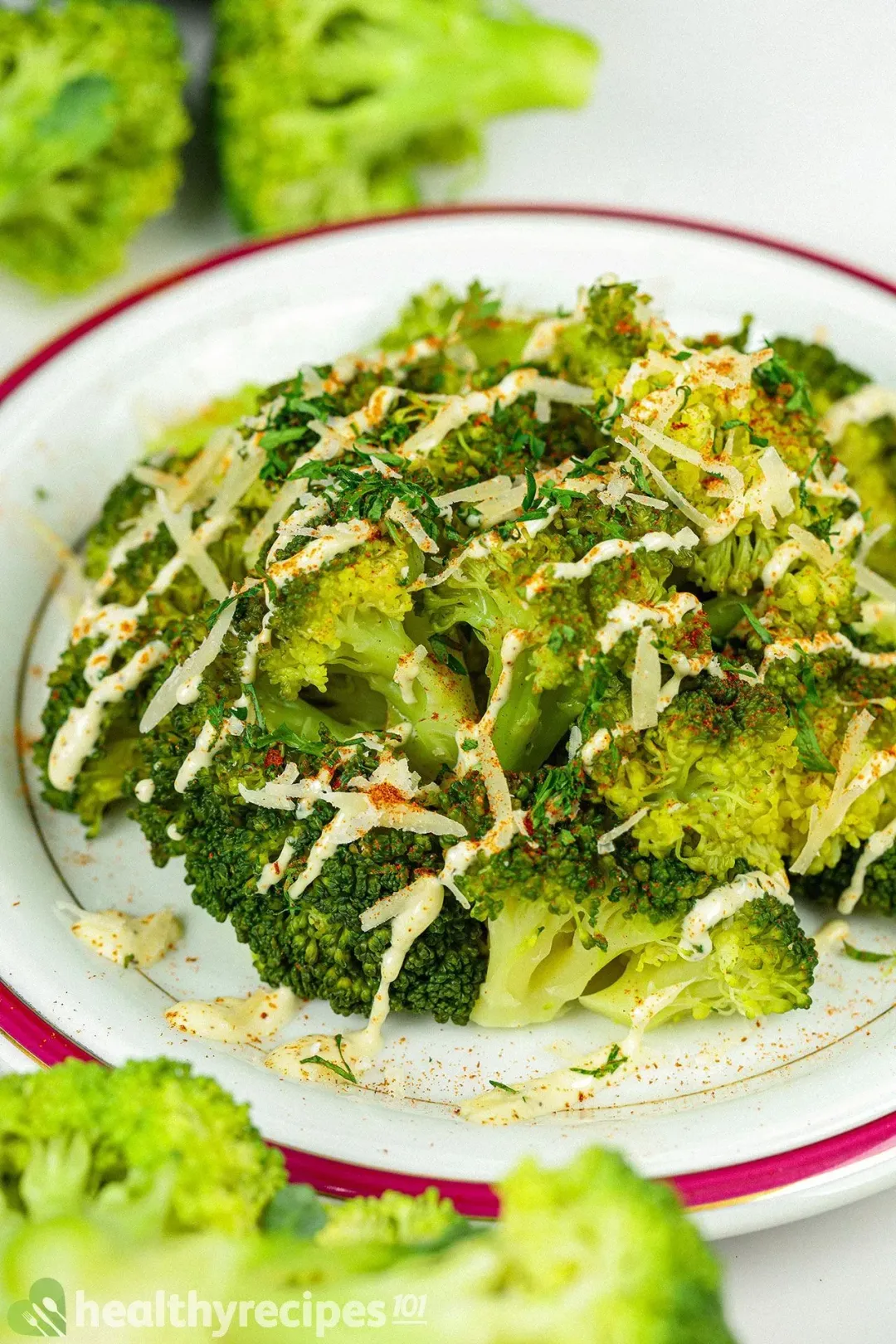
1 of 7
Steamed Broccoli Recipe
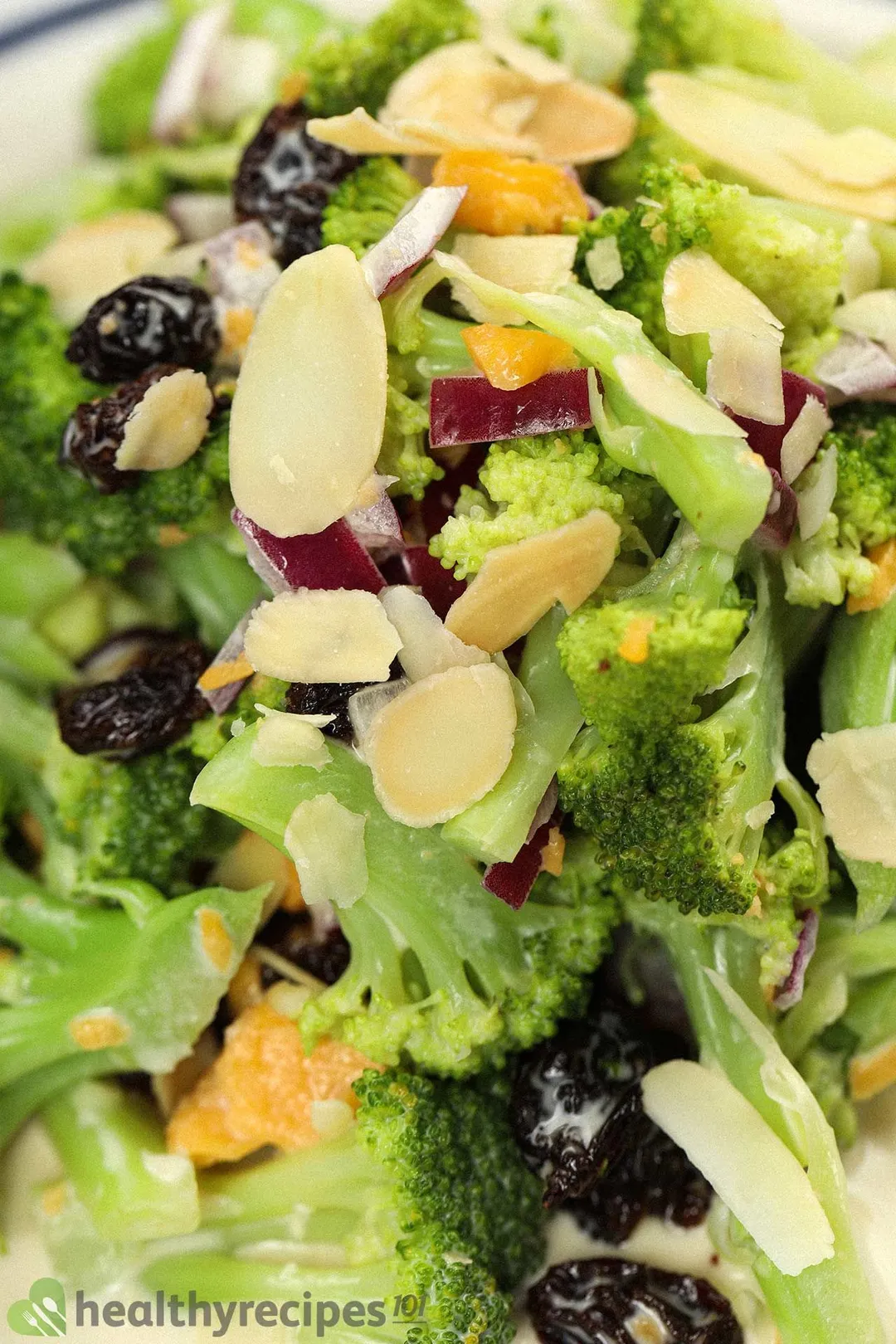
1 of 7
Broccoli Raisin Salad Recipe
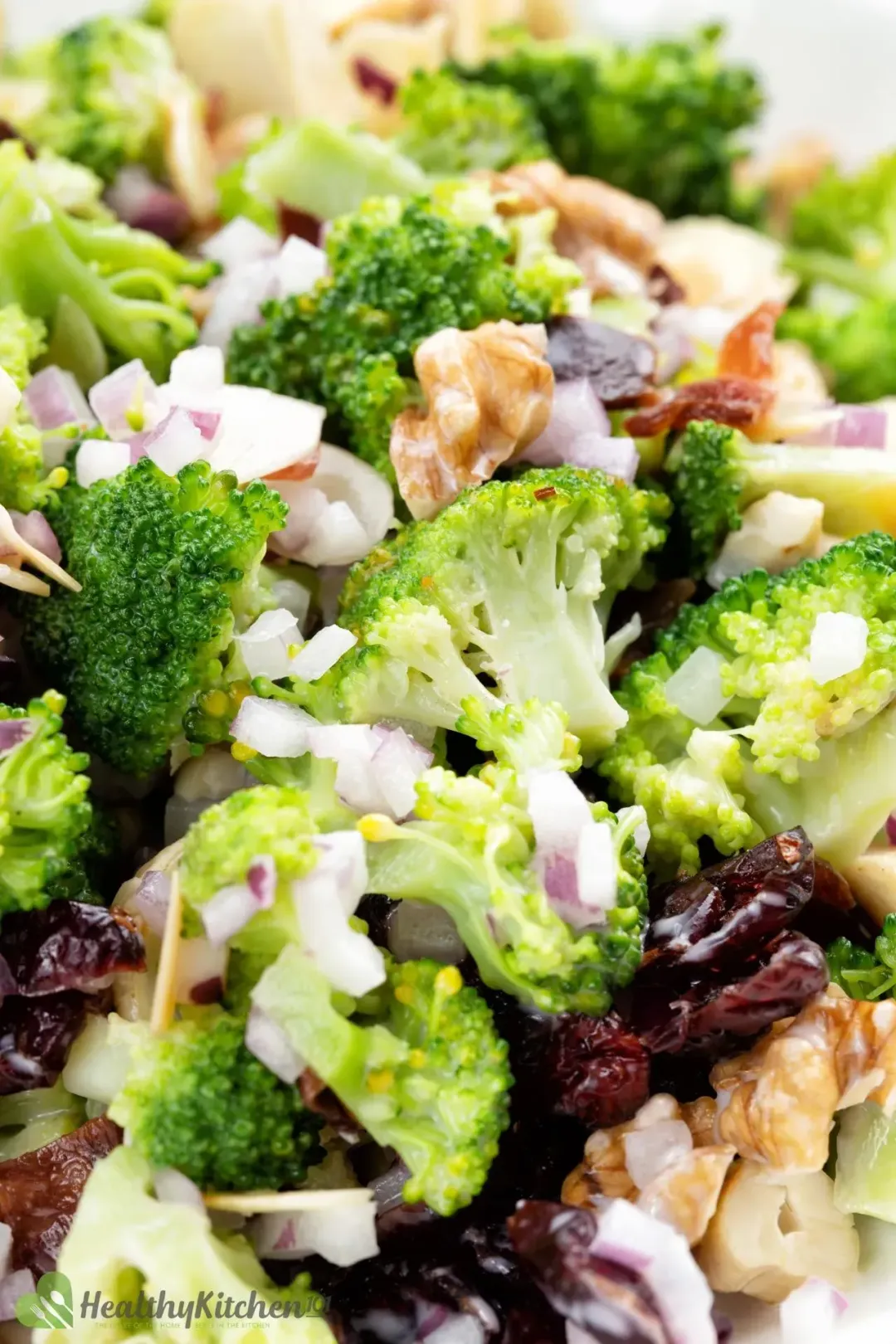
1 of 7
Healthy Broccoli Salad Recipe
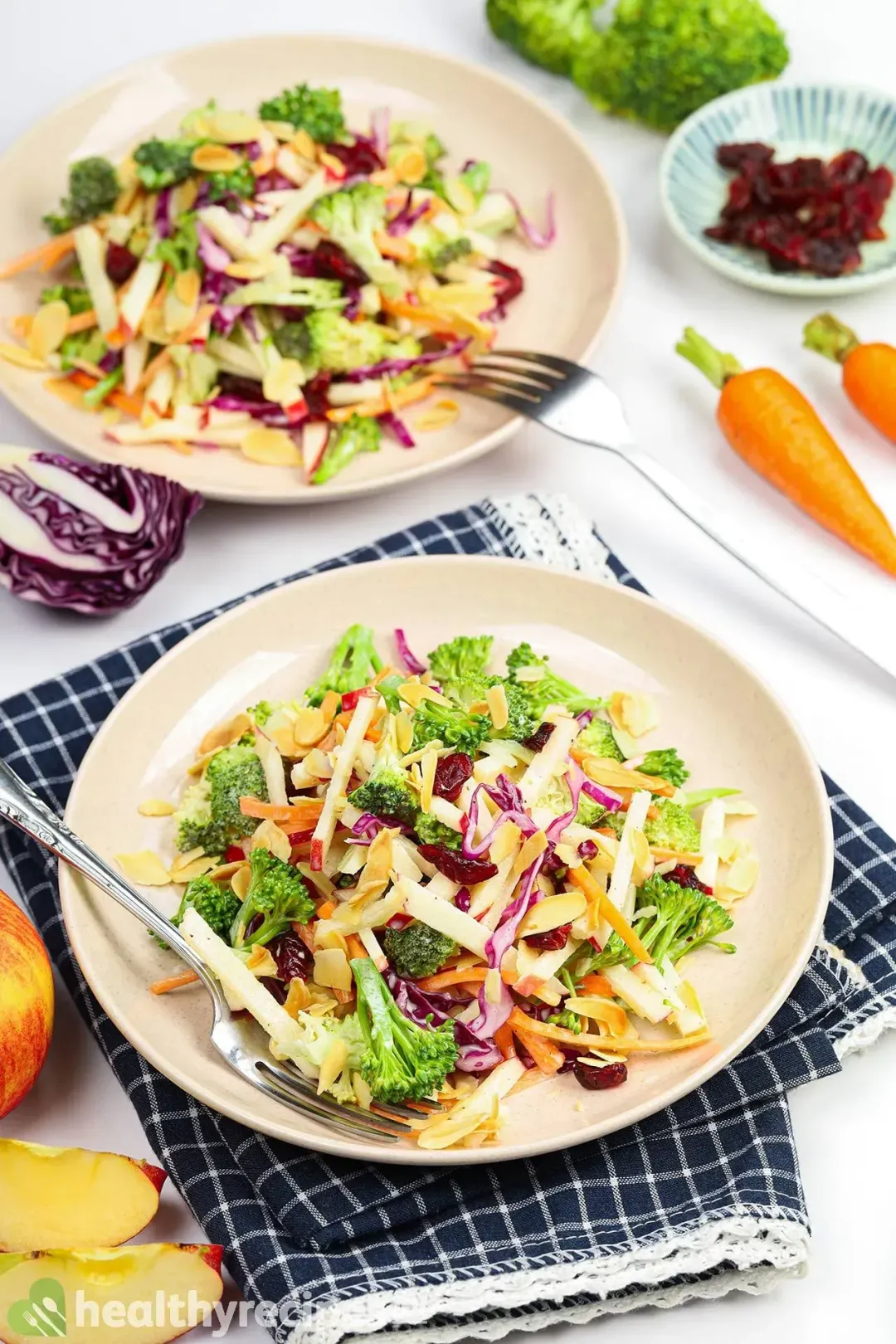
1 of 7
Broccoli Slaw Recipe
How to Season Broccoli
- Buy and prepare fresh broccoli:
First, make sure you buy bright green broccoli heads with clustered florets and firm stalks instead of yellow and withered ones.
Next, detach the broccoli head from its stalk. Pull the florets apart from the big head.
Remove the fibrous skin on the broccoli stalks, as it will become tough and chewy after cooking. Then cut the thick stalk into shorter sticks.
The size of the florets and the length of the stalks should depend on what’s specified in your recipe. In most cases, the florets and the stalk are cut into pieces of similar sizes.
The broccoli pieces should be well rinsed, drained of excess water, and then seasoned. Make sure they are completely dry before moving on to the next step so the spice rub can adhere properly and the broccoli will crisp up better.
- Seasoning broccoli:
If you want to keep the seasoning simple, a few tablespoons of olive oil, some garlic, and salt are enough. However, if you want a richer, more nuanced flavor, feel free to spice it up with your favorite herbs and spices.
Just follow the instructions in the recipe as each cooking method will call for different types of sauces and marinades.
If you're sautéeing broccoli, combine them with the sauce mixture in a skillet and mix together until the sauce thickens and the vegetables are equally coated.
If you're baking or roasting the broccoli, toss the florets with the sauce mixture evenly before adding them to the oven and leaving the rest to the appliance.
You can also get creative with the garnishes. Try adding some fresh herbs (parsley, thyme, etc.), a few pinches of pepper or red pepper flakes for a hint of spice, or some grated cheese for an added kick of sharpness.
Easy Ways to Cook Broccoli
Most of the dishes we introduce in this list can make excellent sides for hearty and savory main dishes such as grilled steak, pork roast, baked chicken, and grilled fish...
We've provided brief descriptions below of each cooking process for a simple broccoli dish to help you visualize how it might all come together.
To make a broccoli salad:
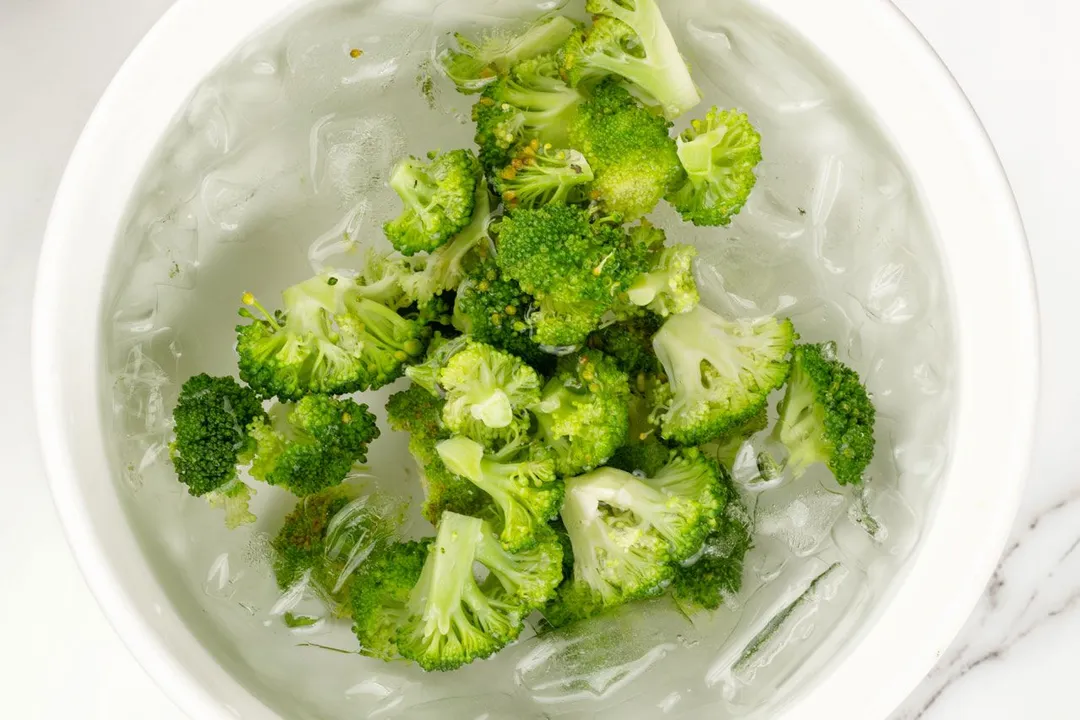
- Bring a pot of water to a boil.
- Blanch the broccoli: Place the broccoli florets in a colander and immerse it in the boiling pot for 1 minute, then fish it out immediately. Blanching is much like rapidly steaming. As salads require no cooking, only tossing and serving, you’ll need the broccoli to be tender enough to chew and no longer taste bitter like when it’s raw, but still crisp and fresh so it won't get soggy when absorbing the vinaigrette.
- Put the colander under running cold water to cool it down and to stop it from further cooking.
- In a mixing bowl, combine the blanched broccoli with the other salad ingredients, and toss them with a salad dressing until evenly coated. Note that you might need to wait until the broccoli is completely cooled before tossing in the dressing, since there will be some residual heat from blanching.
- Portion out and serve immediately.
To steam broccoli in a simple and basic way:
- Bring a pot of water to a boil.
- Reduce the heat to low and add the broccoli to the boiling pot. Steam until it turns bright green and crisp-tender (about 5-10 minutes).
- Drain the steamed broccoli using a colander and discard the water.
To make sautéed broccoli:
- Heat a large skillet over medium heat.
- Add cooking oil or melted butter to the skillet.
- Add minced garlic and sauté until golden brown and fragrant.
- Add the steamed broccoli to the skillet and sauté until caramelized. You can season with salt and pepper to taste during the sautéeing.
- Remove the skillet from heat. Sprinkle as you wish, portion out, and enjoy.
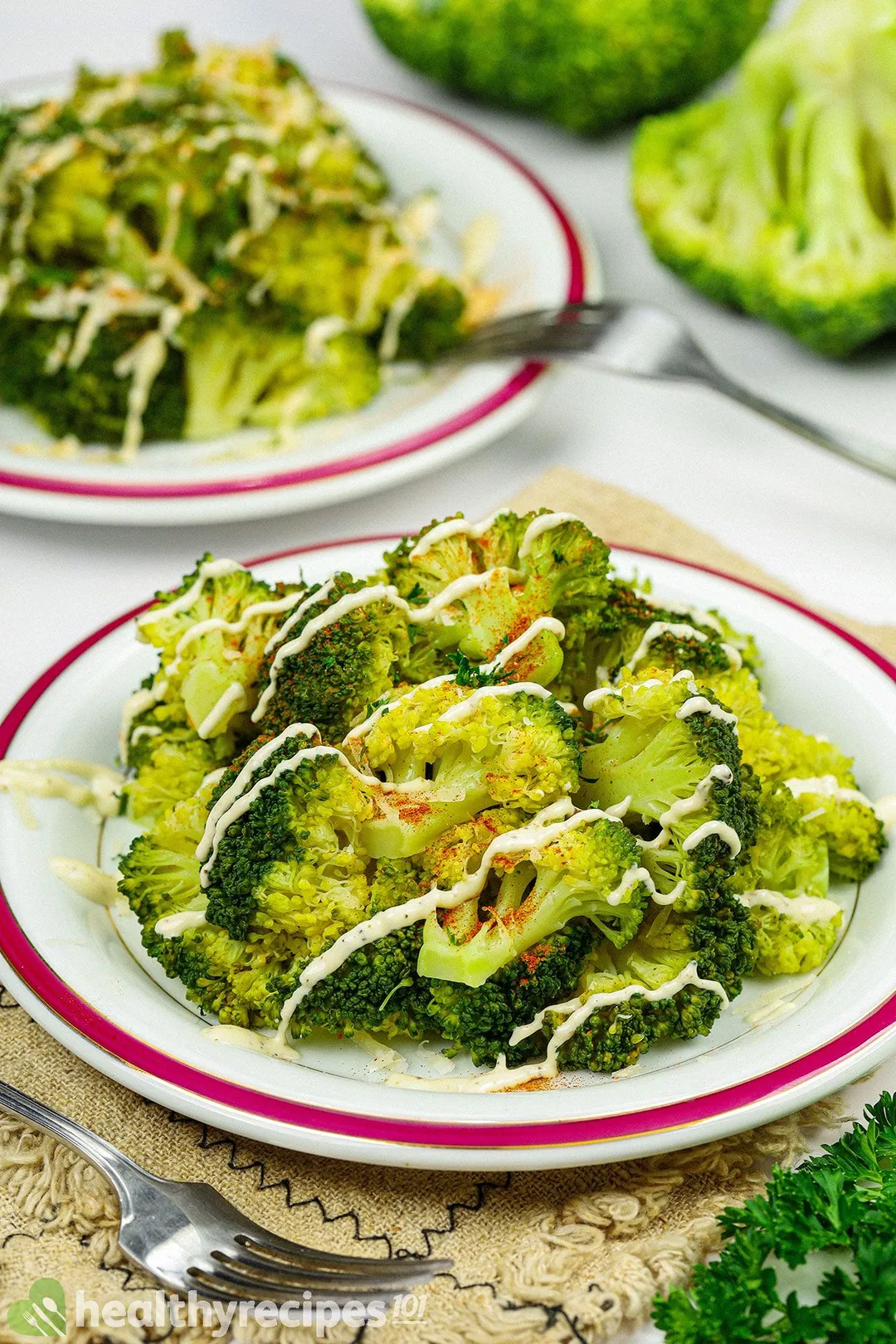
To roast or bake broccoli in the oven:
- Preheat the oven to 400°F.
- Line a baking sheet with parchment paper.
- Place the broccoli florets on the sheet pan and arrange them in a single layer. Toss the florets with cooking oil, garlic, and a seasoning mixture of choice.
- Roast for about 20 minutes in the oven or until the broccoli turns crisp-tender with brown and caramelized edges. No need to flip halfway through.
- Remove the sheet pan from the oven. Garnish as desired and serve hot.
Note: Whatever the method, make sure you cook the broccoli on medium to high heat to ensure crispness and caramelization on the edges, while still keeping the inside tender and juicy.
Luna Regina
Writer, AuthorGracey Le
Food Writer